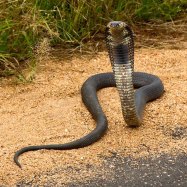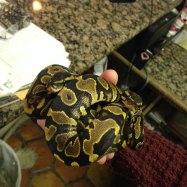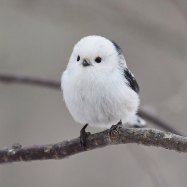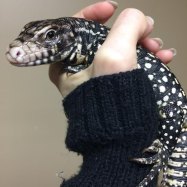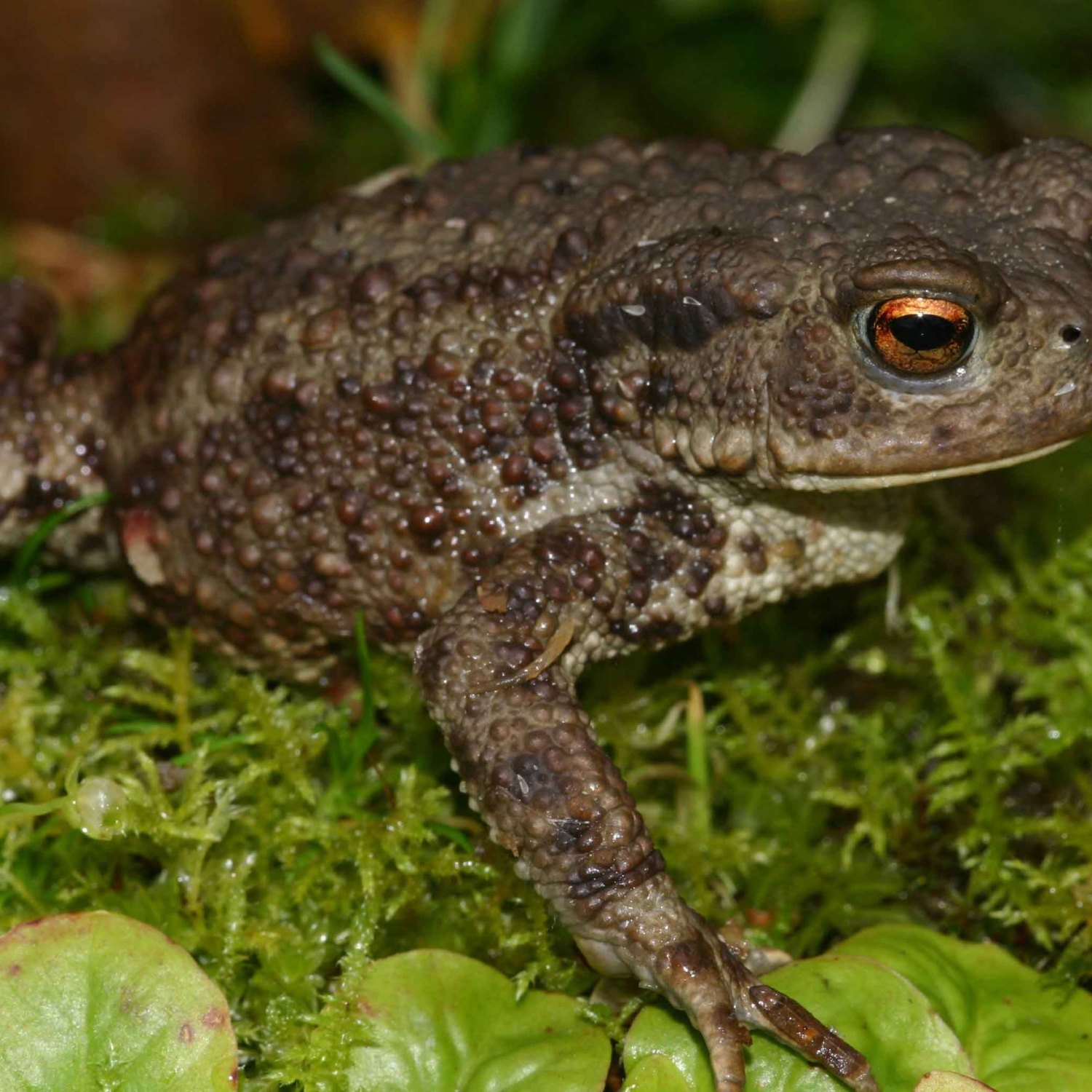
Common Toad
7-13 cm
The Common Toad, also known as the Bufo bufo, is a fascinating amphibian found in woodlands, gardens, ponds, and meadows. With a stocky body and warty skin, it can reach a length of 7-13 cm and belongs to the Bufonidae family. Keep an eye out for this charming creature on your nature walks! #CommonToad #BufoBufo #Amphibian #NatureFind
Animal Details Summary:
Common Name: Common Toad
Kingdom: Animalia
Habitat: Terrestrial
The Fascinating World of the Common Toad: A Stocky Amphibian
Imagine walking through a picturesque woodland, the sun streaming through the tree canopy, birds singing their melodies, and suddenly, you spot a small creature hopping across your path. Its brown, warted skin, and stocky body immediately give away its identity - a Common Toad. While this amphibian may seem unassuming at first glance, it possesses a variety of unique features and behaviors that make it a fascinating creature to explore.A Closer Look at the Common Toad: Bufo bufo
Scientifically known as Bufo bufo, the Common Toad belongs to the Kingdom Animalia, the Phylum Chordata, and the Class Amphibia Common Toad. It is part of the Order Anura, meaning "tailless," and the Family Bufonidae, the "true toads." As the name suggests, it has a unique feature of being tailless, unlike many other amphibians.The Common Toad is a terrestrial animal, meaning it lives primarily on land. Its habitat extends across Europe, Northern Africa, and Western Asia, making it a common sight in these regions. While it is a well-known species, it is also found in many different countries, making it challenging to pinpoint precisely where this remarkable creature originated. However, it is primarily believed to have originated from Europe, where it is most abundant.
Home is Where the Heart is: The Habitat of the Common Toad
As mentioned earlier, the Common Toad is a land-dweller and can be found in a variety of habitats, including woodlands, gardens, ponds, and meadows. It prefers to live in moist, humid environments with access to water as it needs to keep its skin damp to survive.Woodlands and gardens provide ample shelter for the Common Toad, where it can hide among the underbrush and leaf litter Chain Pickerel. These habitats also offer a rich food source for the toads in the form of insects and other invertebrates. Ponds and meadows, on the other hand, are crucial for breeding and laying eggs. The Common Toad is an oviparous species, meaning it lays its eggs in water, where the tadpoles can develop and eventually hatch into tiny toadlets.
Surviving in the Wild: Feeding Methods and Adaptations
The Common Toad is a carnivorous animal, meaning it mainly eats other living organisms for sustenance. Its diet consists of a variety of invertebrates, including insects, snails, slugs, worms, and even smaller toads. Toads have a specialized tongue that they can extend quickly to catch their prey. Their eyes are also uniquely adapted, being able to see ultraviolet light, helping them spot and catch their prey more efficiently.Their warty skin might seem like a drawback, but it is, in fact, an adaptation that helps the Common Toad survive. These bumps secrete a toxin that wards off predators, making it challenging for them to prey on toads. Some predators might try to take a bite, but they quickly learn to avoid the warty creatures to avoid the unpleasant experience.
The Beauty of Diversity: Appearance and Coloration
The coloration of the Common Toad varies, but it is typically brown, olive, or grey, making it an excellent example of a camouflage adaptation. In woodlands, where the ground is also often brown, the toads blend in seamlessly, making it harder for predators to spot them. In gardens and meadows, where the foliage is greener, the green skin tones help them stay hidden.Their body shape is also well-suited for survival in different environments. Their stocky build allows them to move swiftly on land, and their strong hind legs help them jump and escape danger quickly. Additionally, their large parotoid glands release a foul-smelling secretion when threatened, which also helps deter predators.
Size Doesn't Matter: Measuring Up the Common Toad
The Common Toad may seem small and unassuming, but it can grow up to 7-13 cm in length. The females tend to be larger than their male counterparts, reaching an average length of 10 cm, whereas the males reach an average of 7 cm. While this may not seem impressive, considering its tiny size, the Common Toad is still a skillful hunter and has adapted well to survive in its environment.Threats to Their Existence: Human Impact and Conservation Efforts
The Common Toad faces a variety of threats, with human impact having a significant impact on their population. Habitat destruction, pollution, and the use of pesticides in gardens and agricultural areas are some of the significant hazards to their existence. Many toads are also killed on the road, as they are often found crossing busy streets during the mating season.To address these issues, several conservation efforts have been put in place to protect and preserve the Common Toad. In Europe, the Toads on Roads project has been established to help toads safely cross roads during the mating season. Some organizations also work to protect their habitats and promote awareness of the importance of preserving our ecosystems.
The Common Toad in Folklore and Pop Culture
The Common Toad has played a significant role in various cultures and beliefs throughout the years. According to Celtic folklore, the toad symbolizes a profound connection with the earth, as it leaves traces of its existence and creates new growth wherever it goes. In Greek mythology, the toad was linked to the goddess of witchcraft and magic, Hecate, who was often depicted with a toad by her side.In pop culture, the Common Toad has been featured in various books, movies, and cartoons, with one of the most notable appearances being in the beloved children's novel, "The Wind in the Willows." The toads' unique appearance and behaviors have also made them popular pets around the world, with many people admiring their distinctive features and intriguing way of life.
The Common Toad: A Treasure to be Preserved
In conclusion, the Common Toad may not be the most flashy or majestic creature in the animal kingdom, but it is still a treasure that deserves to be preserved and appreciated. Its unique features, behaviors, and adaptability make it an essential part of our ecosystem, and it is our responsibility to protect it for future generations to come. So, the next time you spot a Common Toad in the wild, take a moment to marvel at its beauty and appreciate the role it plays in our natural world.

Common Toad
Animal Details Common Toad - Scientific Name: Bufo bufo
- Category: Animals C
- Scientific Name: Bufo bufo
- Common Name: Common Toad
- Kingdom: Animalia
- Phylum: Chordata
- Class: Amphibia
- Order: Anura
- Family: Bufonidae
- Habitat: Terrestrial
- Feeding Method: Carnivorous
- Geographical Distribution: Europe, Northern Africa, Western Asia
- Country of Origin: Europe
- Location: Woodlands, gardens, ponds, meadows
- Animal Coloration: Varies, usually brown, olive or grey
- Body Shape: Stocky with warty skin
- Length: 7-13 cm
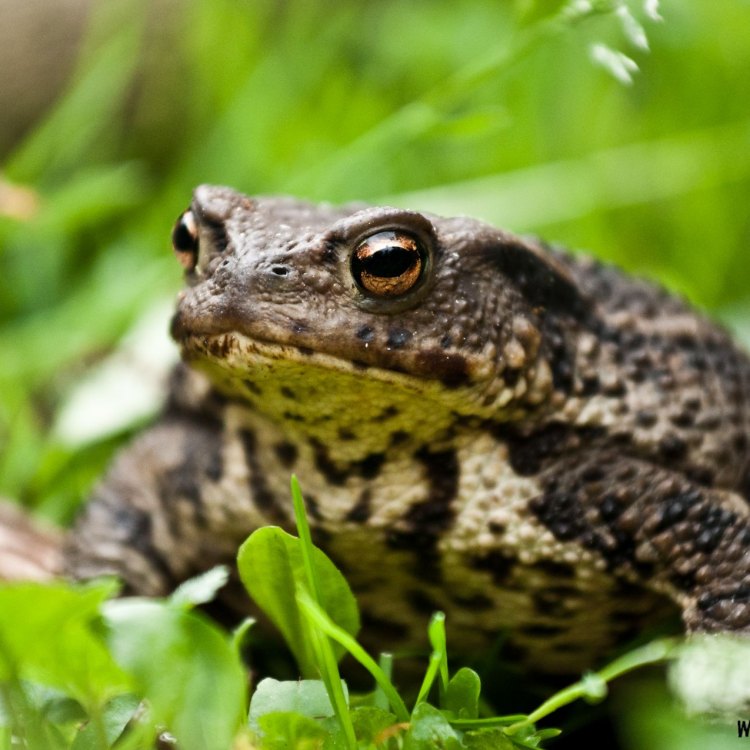
Common Toad
- Adult Size: 10-18 cm
- Average Lifespan: 10-12 years
- Reproduction: Sexual
- Reproductive Behavior: Amplexus
- Sound or Call: Loud croaking sound during breeding season
- Migration Pattern: Non-migratory
- Social Groups: Solitary
- Behavior: Nocturnal, burrows in soil
- Threats: Habitat loss, pollution, road mortality
- Conservation Status: Least Concern
- Impact on Ecosystem: Predator and prey control, seed disperser
- Human Use: None
- Distinctive Features: Large parotoid glands, warty skin
- Interesting Facts: Produces toxic secretions when threatened
- Predator: Birds, mammals, snakes
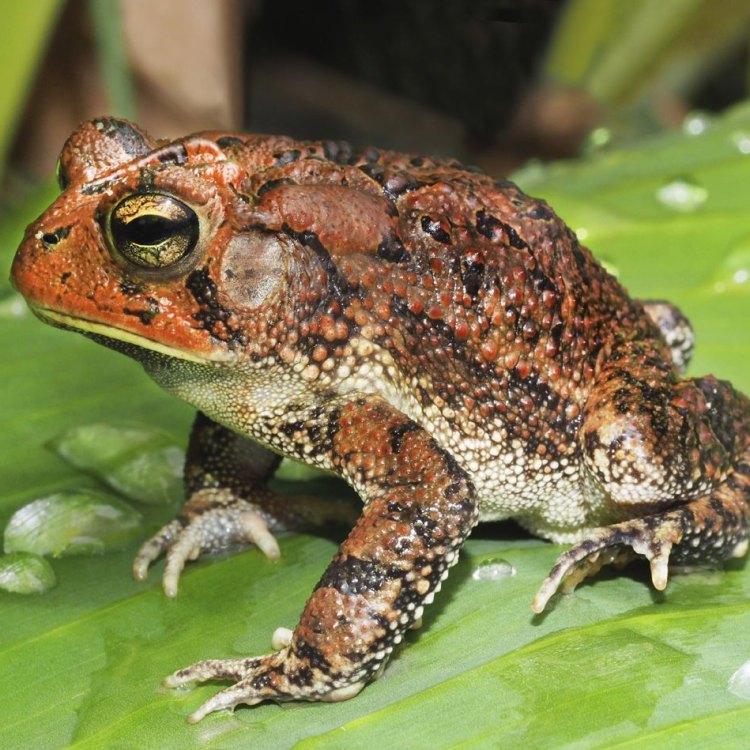
Bufo bufo
The Remarkable Common Toad: A Fascinating and Vital Creature
In the vast world of animals, the common toad may not be the first species that comes to mind. It doesn't have the majestic beauty of a lion, the intriguing intelligence of a dolphin, or the awe-inspiring size of an elephant. However, these small creatures are fascinating in their own right, with unique features and behaviors that make them an important part of our ecosystem.The common toad, scientifically known as Bufo bufo, is a species of amphibian commonly found in Europe, Asia, and parts of Africa PeaceOfAnimals.Com. They are also known by other names such as European toad, brown toad, and giant toad. These toads have a wide distribution, with a range that stretches from the Atlantic coast of Europe to as far as the Pacific coast of Russia. They are also found in various diverse habitats, from forests to grasslands and even urban areas.
But what makes the common toad stand out from other amphibians? Let's delve into some of its unique features and behaviors that make it a remarkable creature.
Size and Lifespan
The common toad may not be the biggest amphibian out there, but it certainly is not small either. On average, an adult common toad can grow to a size of 10-18 cm, with females being larger than males. That's about the size of an adult's hand, making them easily identifiable. However, there have been recorded cases of toads growing up to 24 cm!In terms of lifespan, these toads can live for an impressive 10-12 years in the wild. This relatively long lifespan is due to their low metabolism and their ability to hibernate during harsh weather conditions Cheagle. They also have a unique defense mechanism where they "freeze" their bodies in the winter to conserve energy and survive the cold.
Reproductive Behavior
One of the most interesting aspects of the common toad's life cycle is its reproductive behavior. Like most amphibians, they reproduce sexually, with males and females coming together to mate. However, what sets the common toad apart is its unique form of mating called "amplexus."During amplexus, the male toad will grasp the female from behind using his front limbs, while the female releases eggs. The male then fertilizes the eggs externally with sperm. This method of reproduction ensures that every egg is fertilized, increasing the chances of survival for the species.
Sound or Call
If you've ever been near a pond or a wetland during the spring season, chances are you have heard the loud croaking sounds of male common toads. These toads are known for their distinctive and loud calls, which are produced by their vocal sacs.Male toads use these calls to attract females and establish their territory during the breeding season. The sound can be heard up to several kilometers away, making it an efficient way of communication for these solitary creatures.
Migration Pattern and Social Groups
Unlike some other amphibians, common toads are non-migratory, meaning they do not travel long distances to find breeding grounds. They typically live in one area for most of their lives, only moving to hibernate or during extreme weather conditions.As for their social groups, common toads are mostly solitary creatures. They may interact during the breeding season, but for the most part, they prefer to live and hunt alone.
Behavior and Habitat
The common toad is a nocturnal creature, meaning it is most active at night. As a burrowing species, they spend most of their days hidden in burrows or under rocks and logs. This behavior helps them conserve energy and avoid predators.These toads are also well-adapted to live in a variety of habitats, from forests and meadows to urban areas and even gardens. They can withstand a wide range of temperatures, making them a hardy species that can thrive in various environments.
Threats to the Common Toad
Despite their adaptability and resilience, common toads face several threats that can affect their populations. Habitat loss is a significant issue for these creatures, with the destruction of wetlands and other natural habitats due to human activities. Pollution is another concern, as amphibians are highly sensitive to changes in water and air quality.One of the most significant threats to the common toad is road mortality. These toads often migrate to breeding grounds, and while crossing roads, thousands of them are killed by vehicles. Toad tunnels and fences have been implemented in some areas to protect them, but more needs to be done to reduce this threat.
Conservation Status and Importance to Ecosystem
Despite these challenges, the common toad is currently listed as "Least Concern" on the IUCN Red List of Threatened Species. This means that their populations are stable and not endangered. However, conservation efforts are still necessary to ensure their survival and maintain a healthy balance in our ecosystem.The common toad plays an essential role in its ecosystem, acting both as a predator and prey. As insect-eaters, they help control insects in their habitat, reducing the spread of diseases. They also serve as prey for various other species, such as birds, mammals, and snakes, contributing to the food chain.
Moreover, common toads are essential for seed dispersal. As they burrow and move through the soil, they help spread seeds, contributing to the growth and diversity of plant life in their environment.
Distinctive Features and Interesting Facts
The common toad may not be the most visually appealing creature, but it has some unique features that set it apart from other amphibians. One of the most notable features is their large parotoid glands, located behind their eyes, which secrete toxic substances to deter predators.Another interesting fact about the common toad is that they are capable of producing toxic secretions from their skin when threatened. These substances can irritate predators, causing them to back off or even die if they consume the toad.
Human Use
While many amphibians are used for various human purposes, such as food or medicine, the common toad is not one of them. They have no known use to humans, although they do contribute indirectly to our lives through their vital role in maintaining the ecosystem.In Conclusion
In conclusion, the common toad may not have the fame and glory of some other creatures, but they are undoubtedly an essential part of our ecosystem. With their unique features and behaviors, they contribute to the balance and diversity of our environment. It is crucial to continue protecting and conserving these fascinating and vital creatures for future generations to appreciate and learn from.
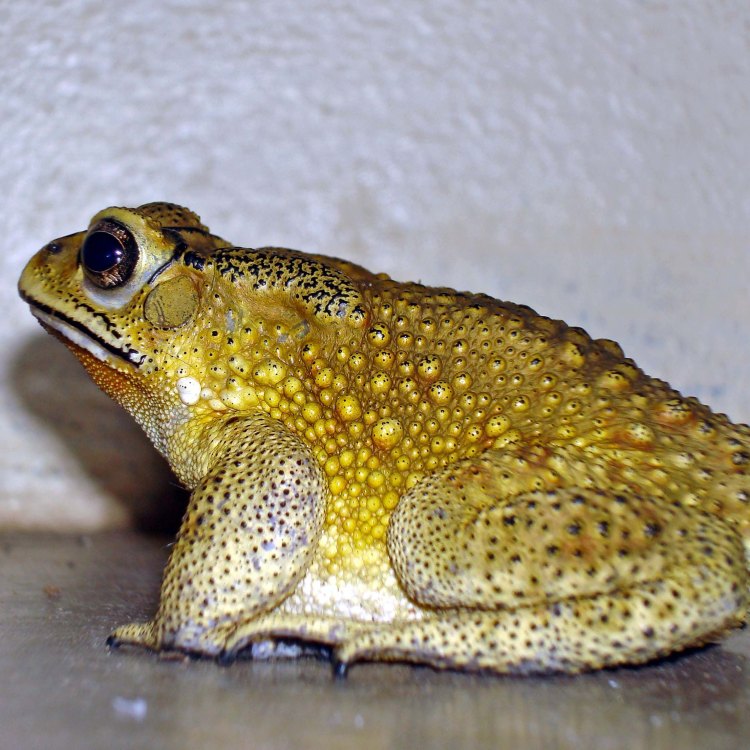
The Fascinating World of the Common Toad: A Stocky Amphibian
Disclaimer: The content provided is for informational purposes only. We cannot guarantee the accuracy of the information on this page 100%. All information provided here may change without prior notice.





